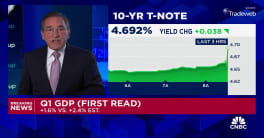A leading indicator for the U.S. commercial real estate market continued decelerating for the fifth consecutive quarter on Thursday, with all components of the index lower in the third quarter, according to the National Association of Realtors (NAR).
The NAR's Commercial Leading Indicator for Brokerage Activity moved down 1.7% in the third quarter, following a drop of 0.9% in Q2, pushing the index down to a reading of 116.5. The index is 3.1% lower than in the third quarter of 2007 when it stood at 120.3.
The decline in the index means commercial real estate activity, as measured by net absorption and the completion of new commercial buildings, is projected to weaken over the next six to nine months.
"Aside from weakening conditions in the index variables, the commercial mortgage-backed securities market is all but frozen, making it very difficult to rollover existing debt that is coming due," said Lawrence Yun, NAR chief economist. "It is encouraging to hear the Treasury Department is considering using the Troubled Asset Relief Program to help revive the commercial real estate debt market, but time is of the essence, and it must be implemented immediately."
The Commercial Leading Indicator for Brokerage Activity is an index that assesses market behaviour in the major commercial real estate sectors. Using 13 variables, it was designed to provide early signals of turning points between expansions and slowdowns in commercial real estate.
The 13 variables are: industrial production, the real estate investment trust (REIT) price index, the National Council of Real Estate Investment Fiduciaries (NCREIF) total return, personal income minus transfer payments, jobs in financial activities, jobs in professional business service, jobs in temporary help, jobs in retail trade, jobs in wholesale trade, initial claims for unemployment insurance, manufacturers' durable goods shipment, wholesale merchant sales, and retail sales and food service.
By Stephen Huebl and edited by Sarah Sussman
©CEP News Ltd. 2008







